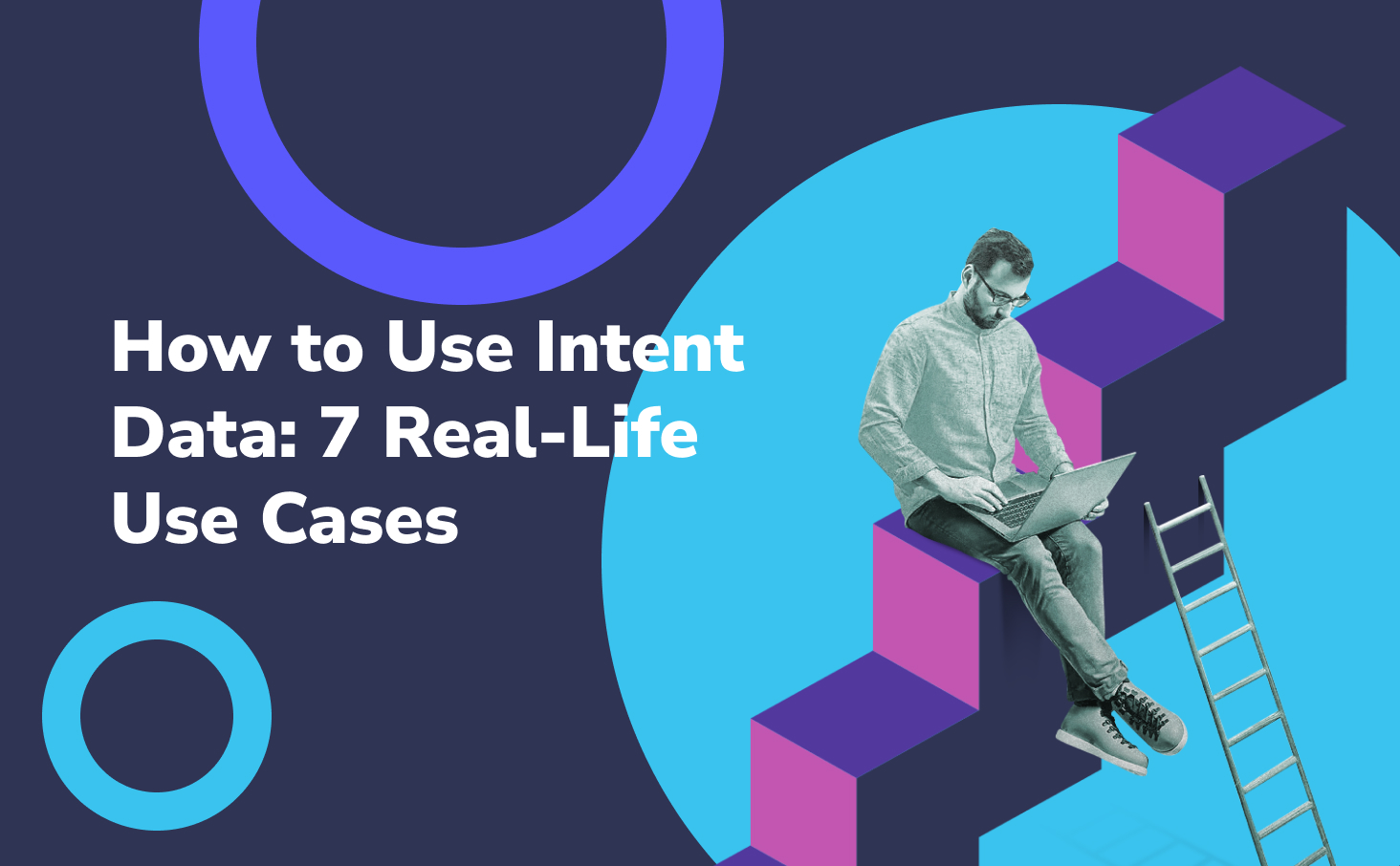
Mia Tayam
~2 min
How to Use Intent Data: 7 Real-Life Use Cases
In this article, we’ll look at seven real-life use cases of buyer intent data listed in the “State Of Intent Data” study by N.Rich and Driving Demand. This collaboration has captured the pulse of intent data, revealing the main patterns and use cases and providing business professionals with an understanding of intent data's potential and the tools to harness it for accurate results.
Over 50 industry experts were interviewed to explore the essence of their strategies and practices.
Understanding the Types of Intent Data
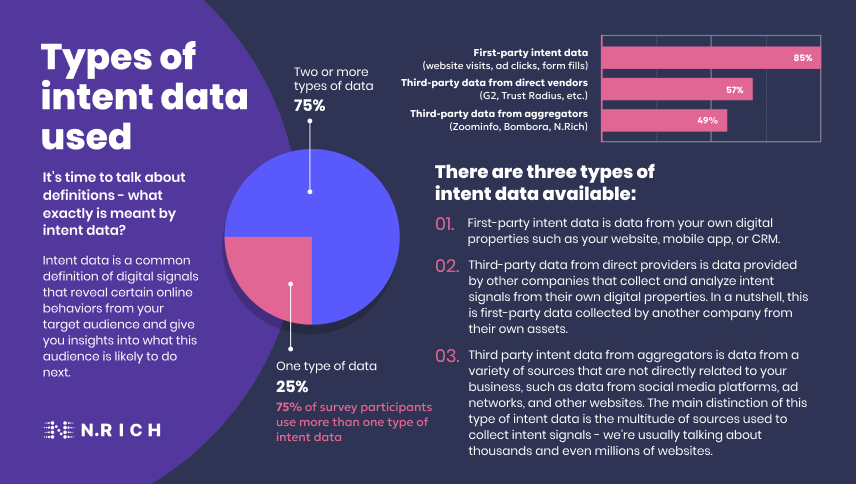
Intent data is gathered differently, each offering a unique perspective on customer intent. Here are the key types of intent data:
- First-Party Intent Data: This is collected from your digital properties, such as your website, mobile app, or CRM system. It provides insights into the behavior of visitors and users on your platforms.
- Third-Party Data from Direct Providers: Some companies collect and analyze intent signals from their digital properties. When they share this data with other businesses, it becomes third-party data from direct providers. Essentially, it's another company's first-party data shared with you.
- Third-Party Intent Data from Aggregators: This type of intent data is sourced from various unrelated websites and platforms, including social media, ad networks, and more. It involves collecting signals from multiple sources.
Use Cases of Intent Data and How to Leverage it
.png?width=856&height=484&name=1-2%20(1).png)
Lead and Account Prioritization (69%): Identifying your most valuable accounts appears to be the top priority when utilizing intent data.
Quantitative and qualitative data play an important role in this process. All revenue-generating departments must be well-armed with this data to ensure they direct their efforts toward accounts already showing signs of intent to purchase. Monitoring and scoring the activities of these accounts across multiple platforms is essential to guarantee they receive the utmost priority and personalized engagement. This focus on high-intent accounts streamlines your efforts and ensures that your valuable resources are allocated where they matter most.
Your CRM is valuable for Lead and Account Prioritization through intent data. It allows you to effectively organize and manage the data collected on prospective leads and accounts, making it easier to identify the most valuable ones. By leveraging the insights provided by intent data within your CRM, you can streamline your efforts, ensuring that the right accounts receive the highest priority treatment for engagement.
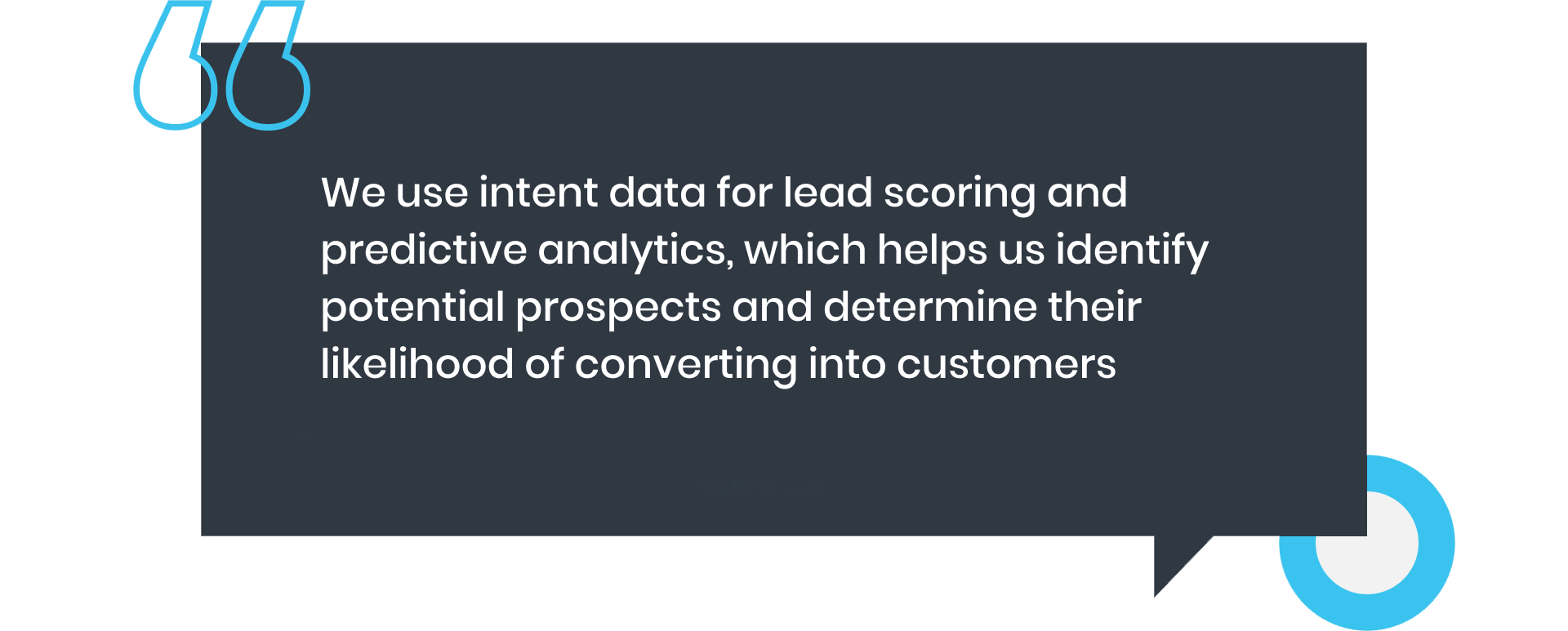
Will Yang, Head of Growth & Customer Success, Instrumentl
Improving Outreach Efficiency (48%): Another common use case of intent data is to boost outreach efficiency and hyper-personalization.
This use case involves tailoring your engagement efforts to maximize their impact and relevance. By utilizing intent data, you can gain valuable insights into your prospects' interests, preferences, and behaviors, allowing you to craft highly personalized outreach messages.
Integrating advanced tracking methods, such as setting up Slack alerts and monitoring ad engagement data, can further refine your outreach strategies, making them more effective and timely. As a result, you can engage with potential customers in a more targeted and efficient manner, ultimately driving higher conversion rates and improving the overall efficiency of your outreach efforts.
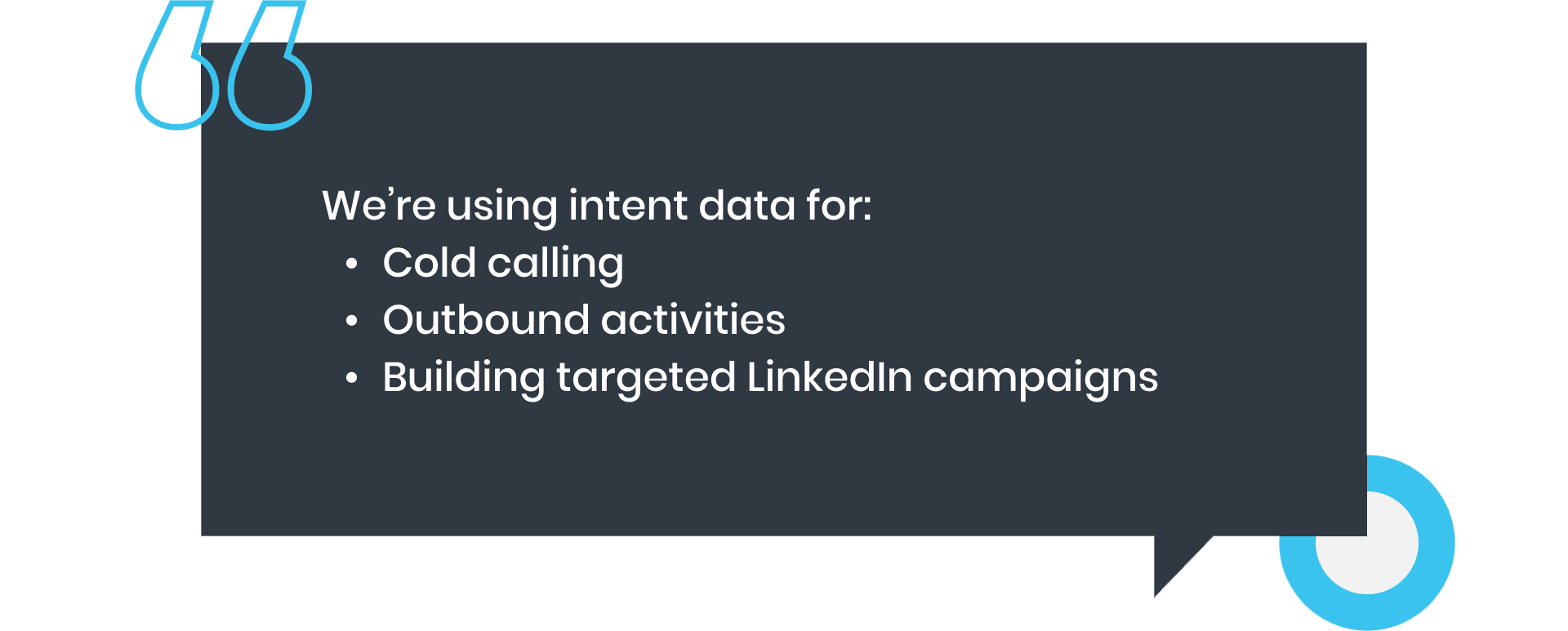 Jon Lindholm, CMO, MaintMaster Systems
Jon Lindholm, CMO, MaintMaster Systems
Enhancing Marketing Campaign Performance (40%): Intent data is valuable for boosting campaign performance and ensuring the resonance of your message.
This approach doesn't solely involve delivering new, relevant ads; it also extends to optimizing your efforts through retargeting. By re-engaging and "reminding" users who have previously interacted with your brand but haven't taken the desired action.
You can explore cross-channel approaches, including integrating display programmatic advertising on platforms like LinkedIn.
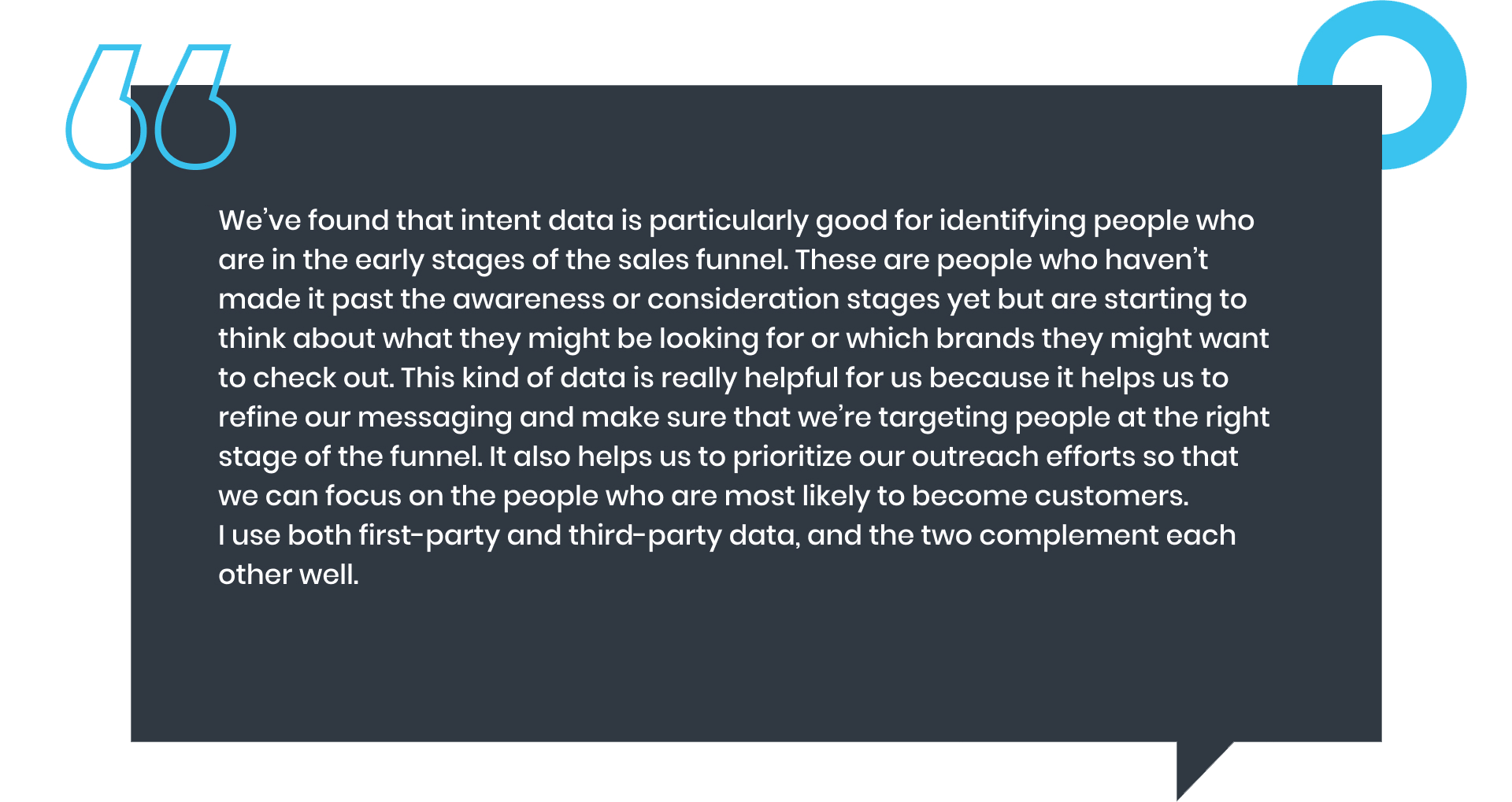 Matthew Ramirez, CEO, Paraphrasing Tool
Matthew Ramirez, CEO, Paraphrasing Tool
Personalization Based on Intent (17%): Intent data is a valuable source of insights regarding user behavior, offering essential signals that reveal their interests and intent levels.
This data empowers businesses to assess the depth of content personalization required. Considerations encompass keywords, the depth and recency of engagement, visit frequency, content downloads, competitor research, and more.
When intent levels are higher, it's imperative to elevate the degree of personalization to ensure that your content deeply resonates with your audience.
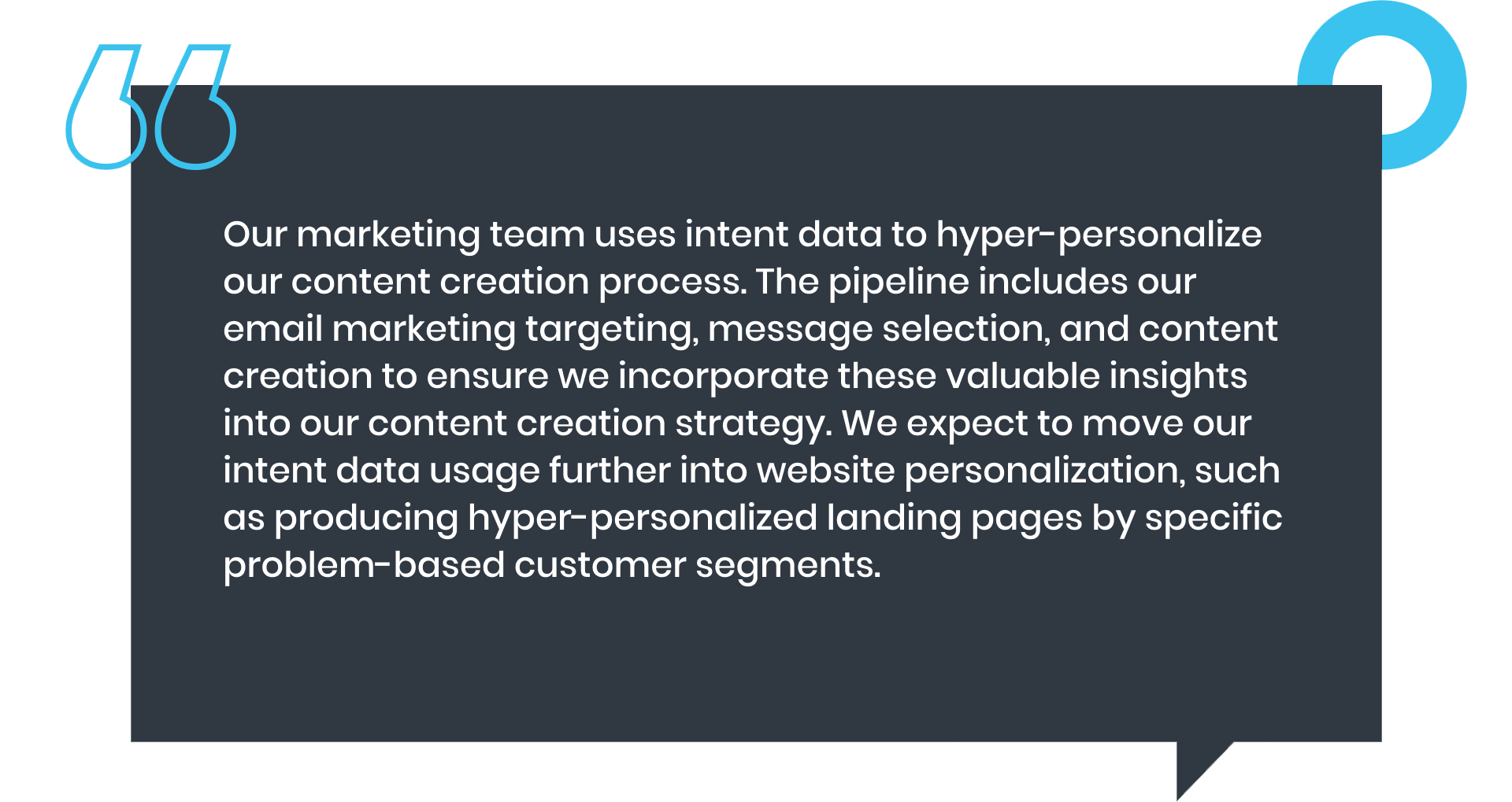 Grant Polachek, Marketing and Operations, Squadhelp.com
Grant Polachek, Marketing and Operations, Squadhelp.com
Gaining Insights into Audience Behavior (15%): Combining intent data and ICP scoring can help accelerate the sales cycle. Engaging with prospects who are not only a great fit but are actively researching solutions reduces the time it takes to move them through the buying journey.
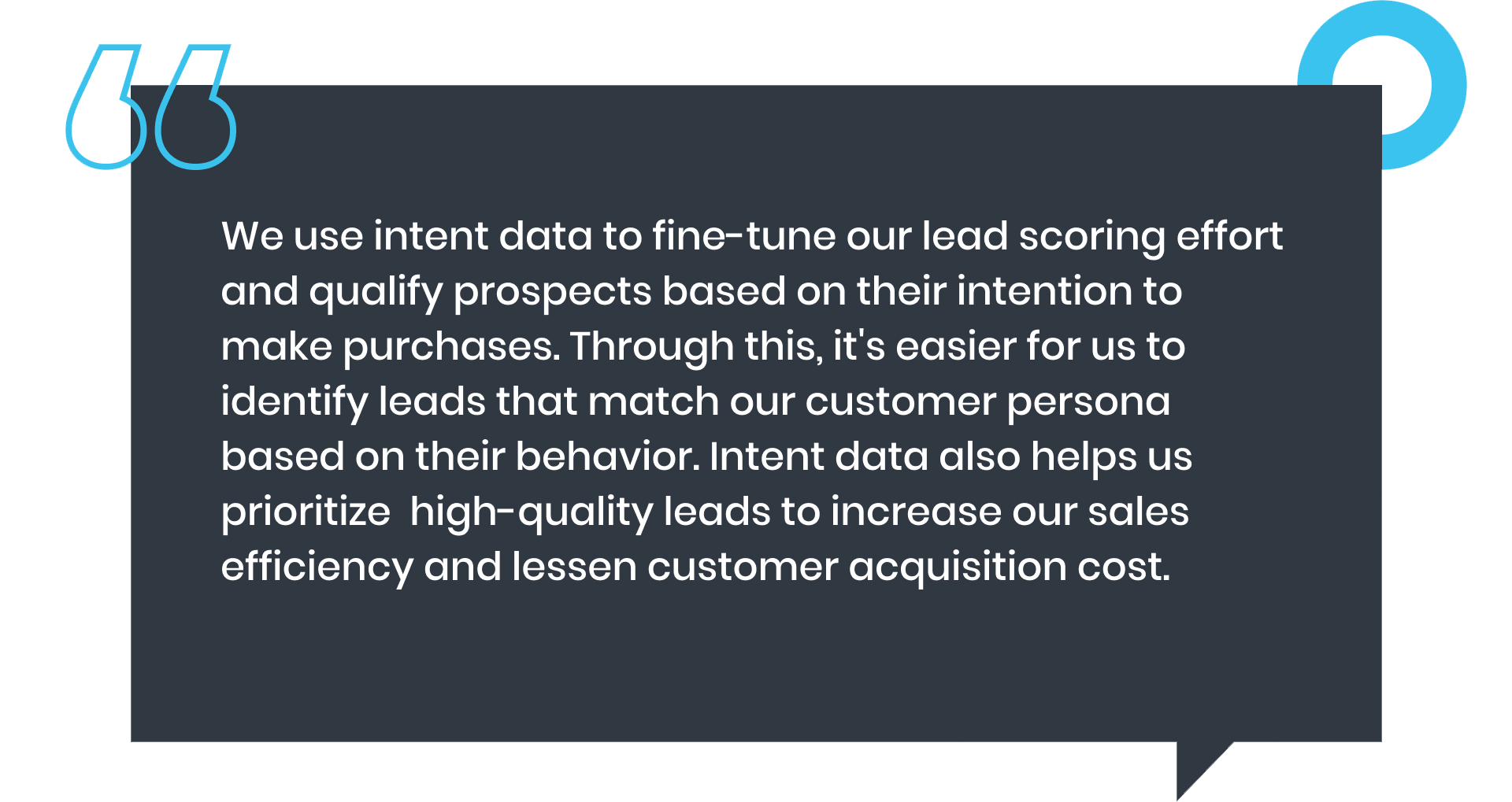 Sam Tabak, Co-Founder, Rabbi Meir Baal Haness Charities
Sam Tabak, Co-Founder, Rabbi Meir Baal Haness Charities
Marketing and Sales Alignment (10%): Intent data helps align marketing and sales efforts by providing real-time insights into the behaviors and interests of potential buyers.
It streamlines the process of passing these high-potential leads to the sales team, ensuring they engage with prospects when they are most likely to convert. This alignment provides a more efficient and cohesive approach for a smoother lead-handling process.
Establish SLAs based on intent data. Define an intent threshold and specify the next actions for your marketing and sales teams.
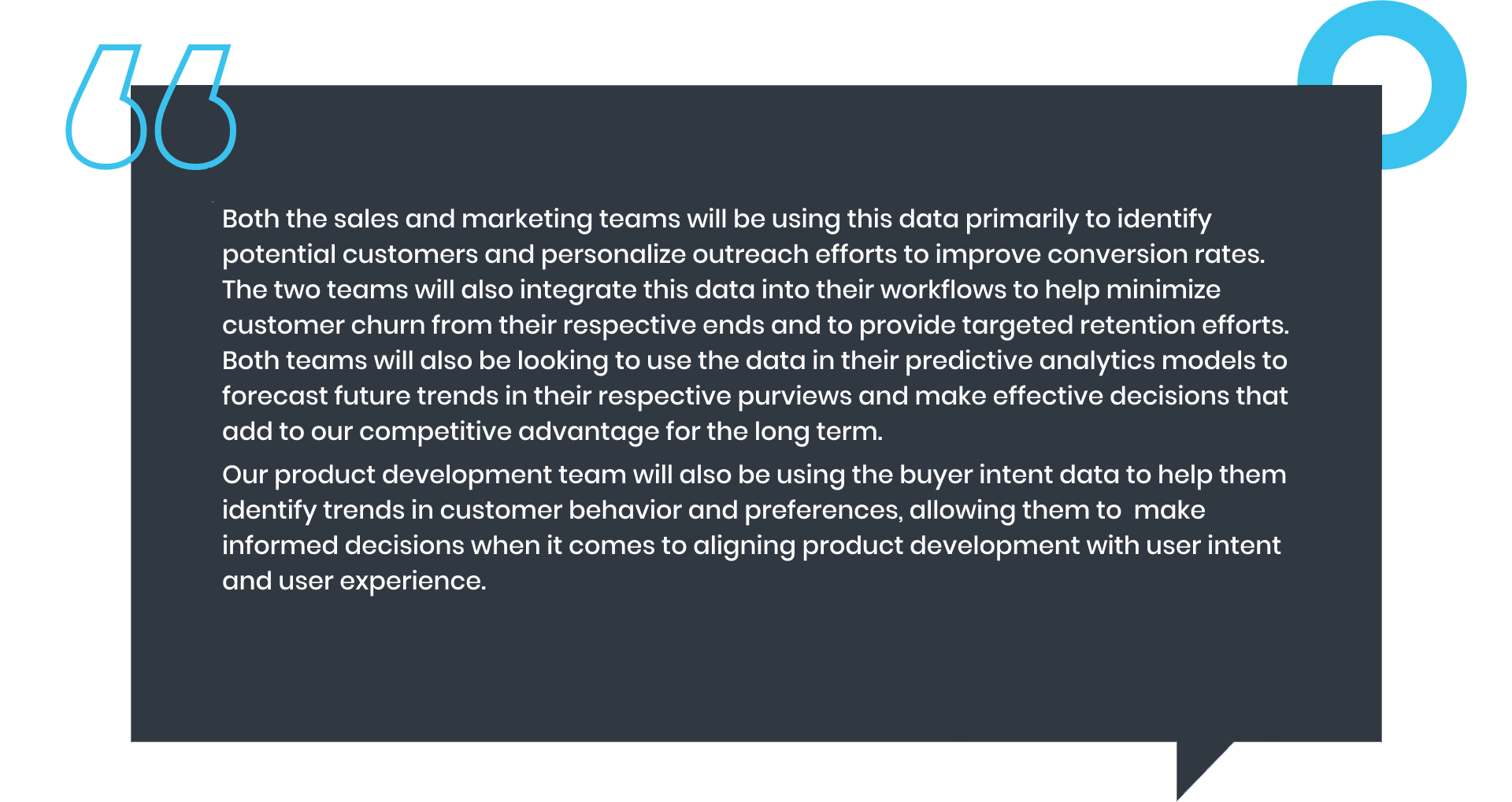 Lisa Richards, CEO and Creator, Candida Diet
Lisa Richards, CEO and Creator, Candida Diet
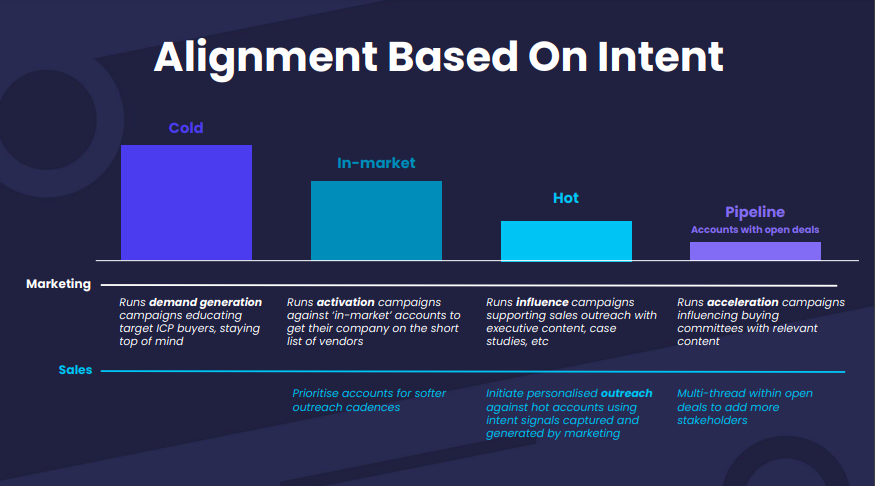
Customer Success (CS): Retention, Cross-Sell, Upsell (4%): By analyzing customer interactions and behaviors, businesses can identify signals indicating the potential for upselling or cross-selling additional products or services.
These insights empower CS teams to engage with existing customers proactively, tailoring their offerings to cater to their evolving needs, thus increasing customer lifetime value. Intent data also helps predict potential churn by identifying warning signals early, allowing CS teams to take preventive actions to retain valuable customers and deliver a superior customer experience.
Conclusion
Intent data, a versatile tool, finds diverse applications across business operations. Key use cases outlined in a State of Intent Data study include:
- Account Prioritization
- Efficiency in Outreach
- Enhancing Marketing Campaign Performance
- Personalization Based on Intent
- Gaining Insights into Audience Behavior
- Marketing and Sales Alignment
- Customer Success (CS): Retention, Cross-Sell, Upsell
You can get a free ungated copy of the State of Intent Data here.